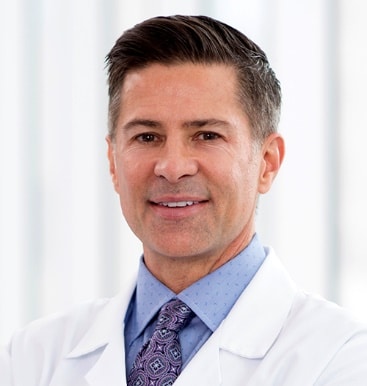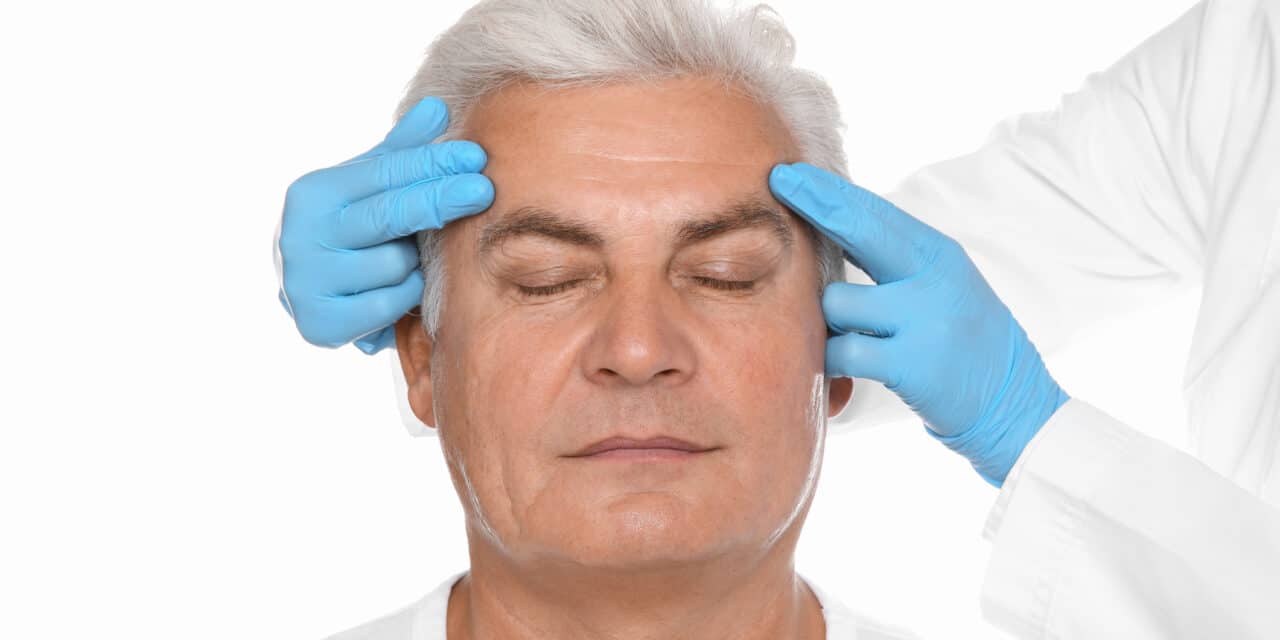AAFPRS President Dr Patrick Byrne discusses the growing interest in facial cosmetic procedures among male patients and how private practices can adapt to meet their evolving needs.
Interest in facial cosmetic procedures among male patients is steadily growing, according to the American Academy of Facial Plastic and Reconstructive Surgery’s 2024 annual survey. Rhinoplasty, blepharoplasty, and hair restoration continue to top the list, alongside increased demand for minimally invasive options such as neurotoxins and dermal fillers. This shift signals not only a broader cultural acceptance but also new challenges and opportunities for private plastic surgery practices.
To explore what’s driving this trend and how surgeons can best respond, Plastic Surgery Practice spoke with Patrick J. Byrne, MD, MBA. Dr. Byrne is the president of the AAFPRS and serves as enterprise chief of the Cleveland Clinic Integrated Surgical Institute and chair of the head and neck surgery department.

Plastic Surgery Practice: The 2024 AAFPRS survey shows a noticeable rise in male patients getting cosmetic surgery and treatments—what do you think is driving this growth, and how should private practices adapt their marketing or patient outreach strategies in response?
Patrick J. Byrne, MD, MBA: There’s no question that we’re seeing more men pursuing facial cosmetic procedures, and several factors are driving this shift. First, there’s growing awareness of how excellent the outcomes can be—especially as more surgeons share results publicly, often showcasing male patients. We also have an aging population, and with it, a growing interest among men in maintaining a refreshed appearance, particularly as they remain active in their careers. Add to that the influence of celebrity culture—men in the public eye who appear noticeably younger than they did a decade ago—and it’s no surprise that interest is surging.
For practices, this trend underscores the importance of creating content that speaks directly to men. Patient stories and before-and-after photos are incredibly effective. Marketing that feels approachable, relevant, and tailored can make all the difference in encouraging men to take the first step.
PSP: With rhinoplasty, blepharoplasty, and hair transplants ranking highest among male patients, how can surgeons tailor consultations to address men’s unique aesthetic goals and concerns while managing expectations?
Byrne: The key is simple: we need to listen. Just like female patients, men fall along a full spectrum of desires and motivations. It’s a mistake to assume what a male patient wants based on trends alone. Every consultation should be a conversation built on curiosity, not assumption.
That said, we do see some broad themes. Many men seek subtle, natural changes—results that don’t draw attention or signal that “work has been done.” This is especially true in procedures like rhinoplasty and eyelid surgery. And hair transplant surgery, where men make up the overwhelming majority of patients, often focuses on restoring a sense of youthfulness and confidence without appearing artificial.
PSP: Non-surgical treatments like neurotoxins and fillers remain top choices for men. How should practices balance offering these services with guiding patients toward surgical options when appropriate?
Byrne: This is where artistic judgment and experience are essential. Some patients may be comfortable with a more sculpted or stylized look, while others seek results so subtle they don’t want anyone to notice. It’s important to understand a patient’s preferences and long-term goals.
When non-surgical approaches start to reach their limits, the conversation naturally shifts. If the patient is open to surgery, we explain how certain concerns—like significant skin laxity or deeper structural changes—may be better addressed surgically. It’s always about aligning the treatment plan with the patient’s comfort, lifestyle, and expectations.
PSP: What role does social media or professional pressure appear to play in men’s increased interest in facial procedures, and how should surgeons address these motivations during consultations?
Byrne: Social media plays a massive role. There are highly influential surgeons showcasing transformative results in men, and that visibility is changing the landscape. It’s also increasingly common for patients to speculate about celebrities who appear to be aging in reverse, and they wonder what’s possible.
As surgeons, our job is to respectfully anchor these conversations in reality. We can be inspired by what’s out there—but we need to ground patients in what’s achievable for them, with a focus on authenticity and long-term outcomes.
PSP: Hair restoration is the only procedure where men significantly outnumber women—how might this influence staffing, equipment investments, or procedural training for private practices?
Byrne: Hair restoration is unique in several ways. These procedures require specialized technology, trained technicians to process grafts, and a significant time investment. A single case can occupy a treatment room for the better part of a day, with the patient awake the entire time.
For practices seeing increased demand, this means rethinking operational flow—dedicated space, investment in staffing, and a commitment to training that ensures excellent outcomes. It’s a high-touch service that requires precision and patience.
PSP: As the demand from male patients grows, what adjustments—if any—should facial plastic surgeons make to their approach to male anatomy, post-op care, or practice branding to better serve this demographic?
Byrne: While surgical principles remain the same, the aesthetic goals often differ. For most men, the desired outcome is a refreshed appearance that complements a masculine facial structure. That requires a slightly different artistic eye, especially when planning procedures like facelifts or rhinoplasties.
Beyond the procedures themselves, practices might consider how their branding and environment speak to male patients. A more gender-neutral tone—whether in interior design, the language used in marketing, or even font choices on the website—can make the practice feel more inclusive and approachable for all.
Cleveland, OH-based facial plastic and reconstructive surgeon Patrick J. Byrne, MD, MBA, is the President of The American Academy of Facial Plastic and Reconstructive Surgery (AAFPRS). Dr. Byrne is internationally recognized as a facial plastic and reconstructive surgeon, with focuses on microsurgical facial reconstruction, skin cancer management, and facial aesthetic surgery.
Dr. Byrne is the Enterprise Chief of the Cleveland Clinic Integrated Surgical Institute and Chair of the Head and Neck Surgery Department at the Cleveland Clinic in Ohio. In this role, Dr. Byrne leads Cleveland Clinic’s surgical specialty departments efforts to be the world leader in patient care, outcomes, education, safety, innovation and research. He is also a Professor at the Cleveland Clinic Lerner College of Medicine as well as at the Johns Hopkins University School of Medicine in Baltimore, MD. PSP
Lead Photo: ID 130292922 © Chernetskaya | Dreamstime.com




